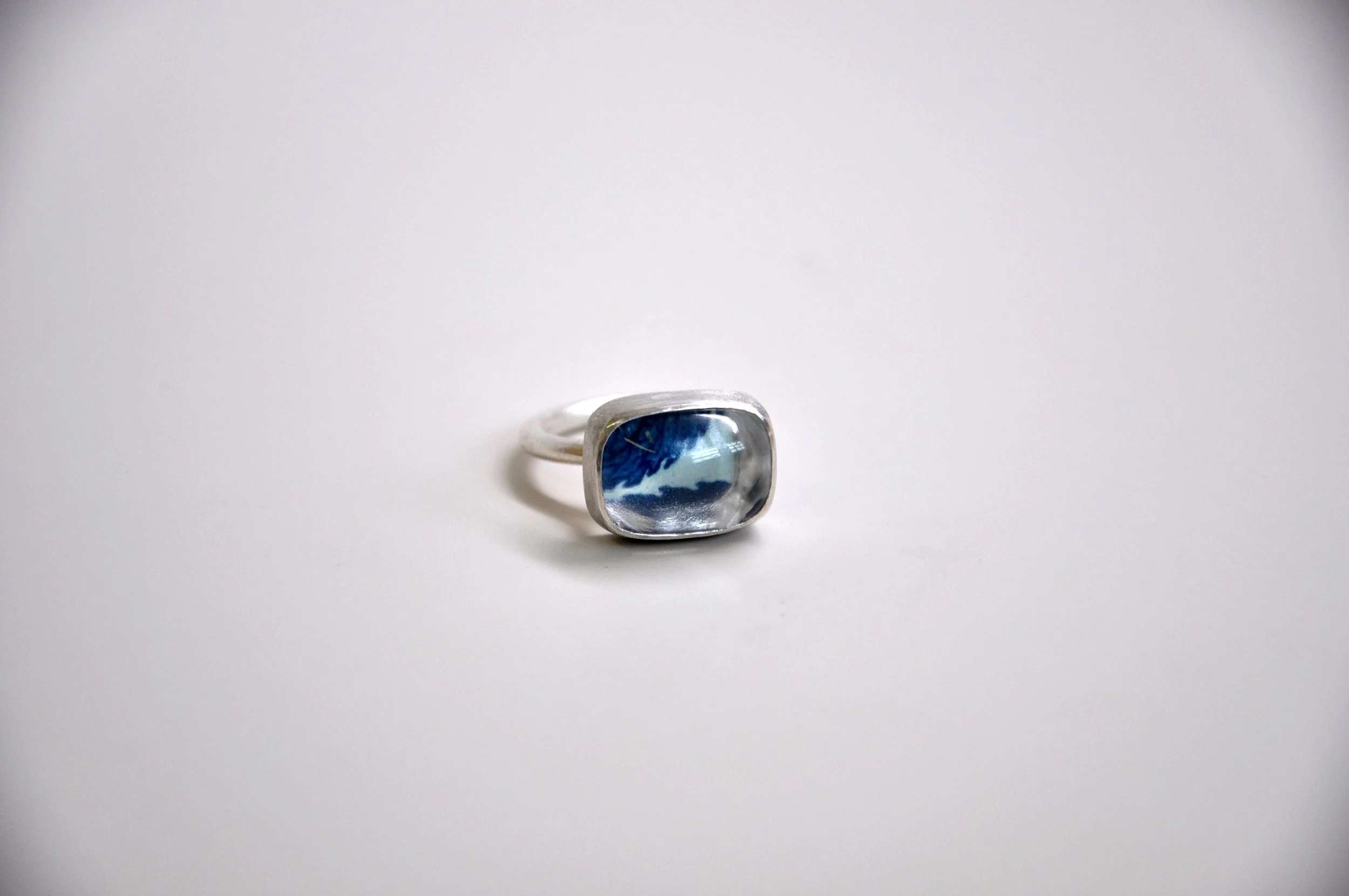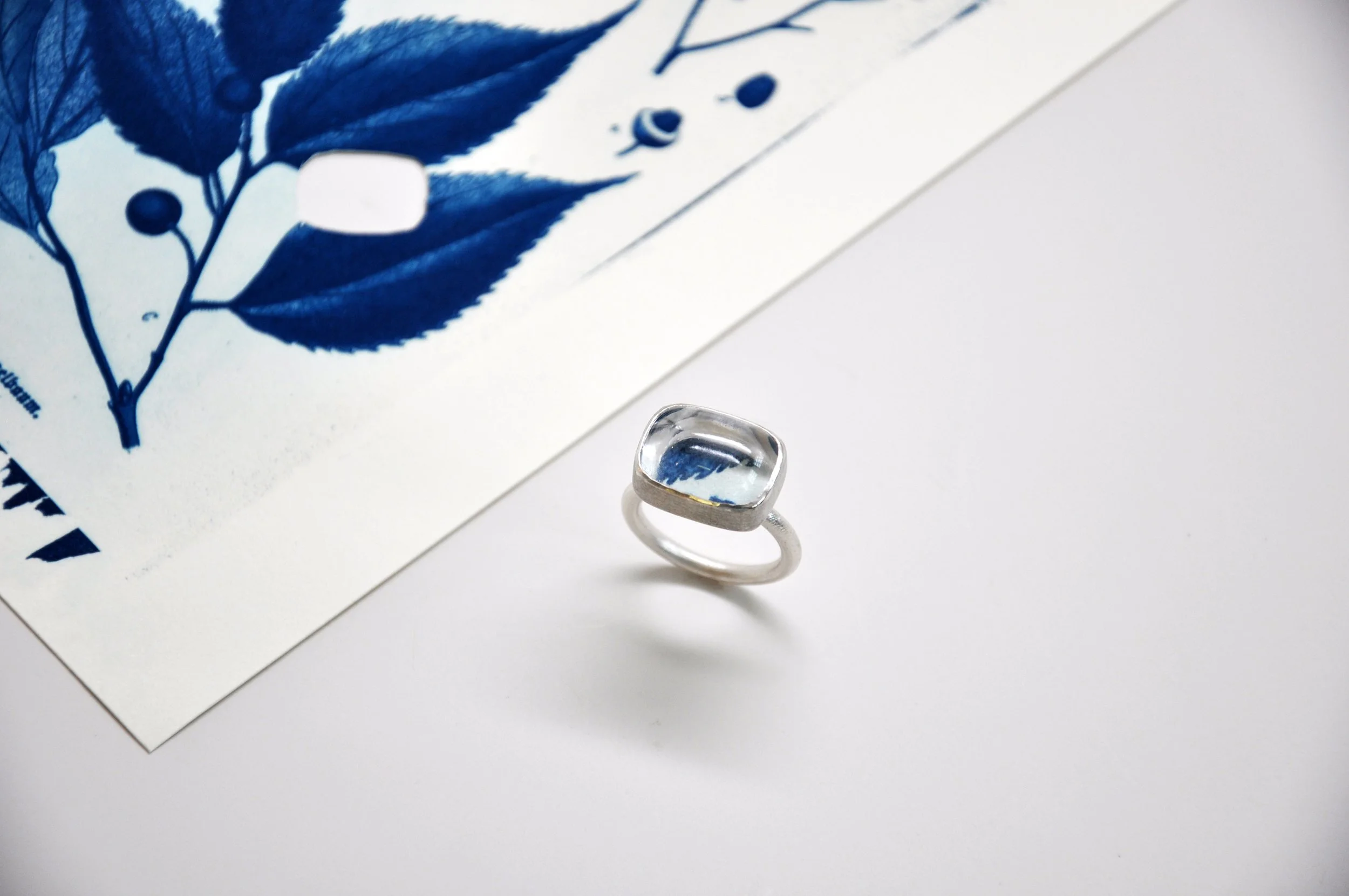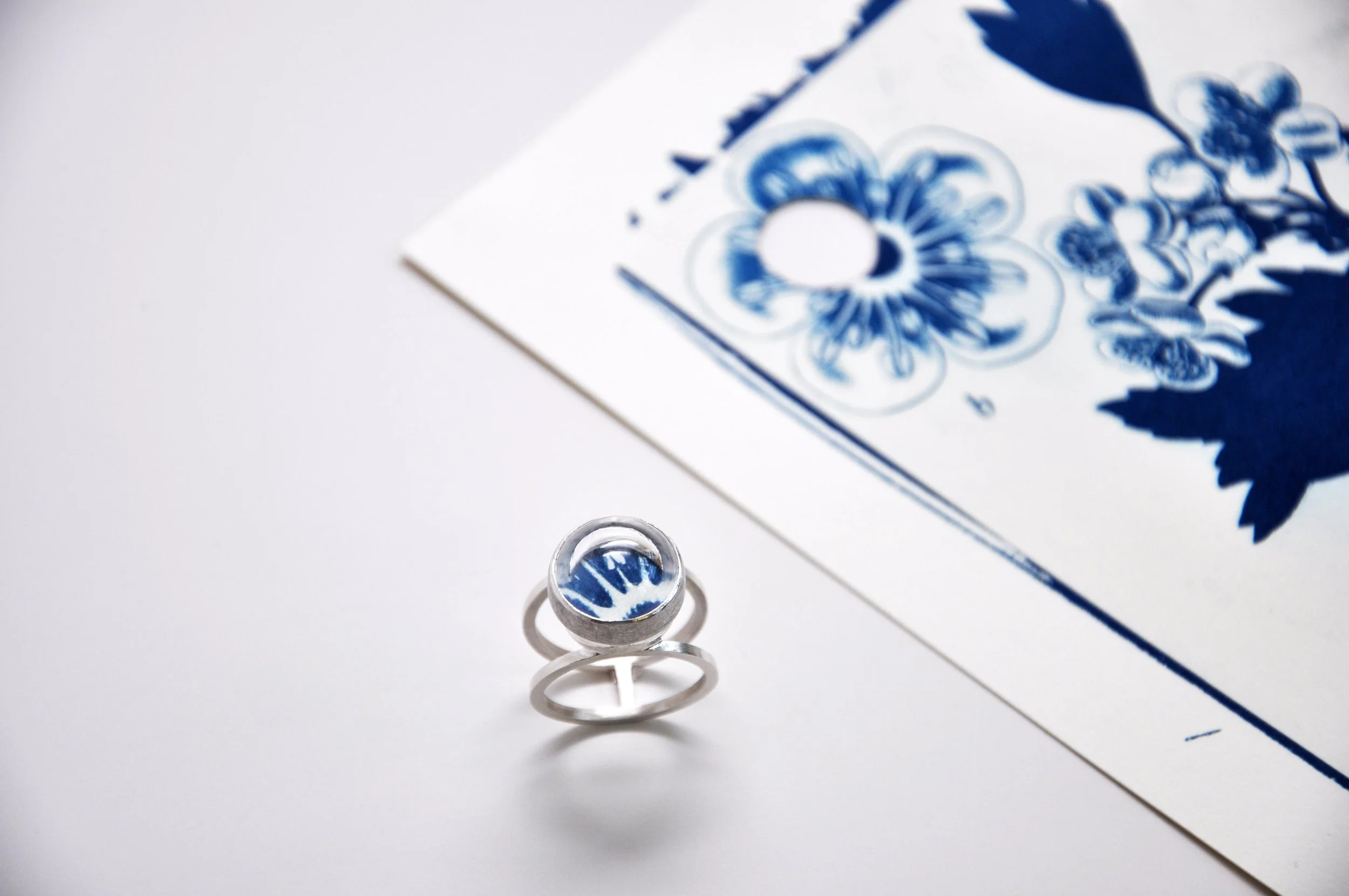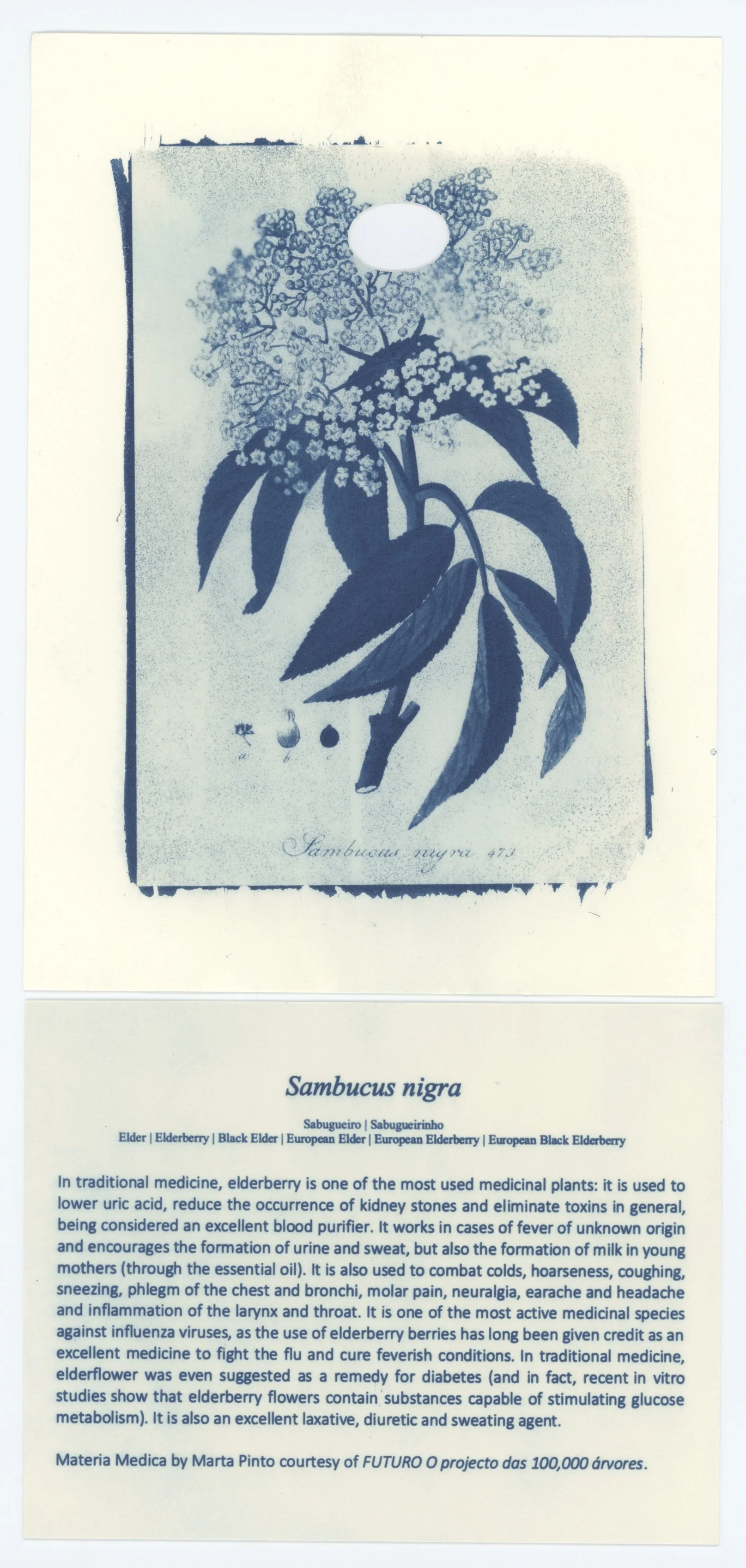ARTIST STATEMENT:
Inspired by research on Porto’s natural landscape and FUTURO - 100,000 Trees Project goal of reforesting the city, Kendall Reiss created three rings to highlight indigenous tree species.
Located near Tincal Lab, cultivation sites Campanhã Azevedo 1, Campanhã Azevedo 2, and Vivieiro do FUTURO include native trees: Celtis australis, Cratageus monogyna, and Sambucus nigra; each have been used as herbal remedies.
Rewilding the urban landscape and the human body demonstrates the benefits of indigenous species to climate and personal health; while focusing on practices of deep ecology through wearable plant medicine harken to traditional jewelry objects, amulets, and personal adornment.
JURIED BY:
Ana Pina (Portugal) | representing Tincal lab
Marta Costa Reis (Portugal) | representing Jewelry
Jacinto Rodrigues (Portugal) | representing Nature
On exhibition at Tincal lab from 6th of November to 31st of December of 2021.
Cyanotype of a 1796 botanical illustration by artist Jacob Sturm, from “Deutschlands Flora in Abbildungen” by Johann Georg Sturm.
CURATORIAL STATEMENT: courtesy of Tincal Lab
For in the true nature of things, if we rightly consider, every green tree is far more glorious than if it were made of gold and silver.
-Martin Luther
It’s not difficult to think that nature can inspire any artistic creation.
Beautiful in form and rich in content, it represents an unlimited universe of fauna, flora and landscape. From the most microscopic scale to the most universal context, it includes natural phenomena unable to tame, sources of life (and death) and essential resources. Colors, materials, textures. Shapes, sounds, movements. It generally excludes the human creation and the built environment, but nowadays, it may be difficult to know a corner of the planet that has not been affected by humankind in any way.
Even though it is something that exists long before and beyond us, its conservation is constantly being menaced by human growth and technological innovation, in an ironic struggle in which human beings seem to be able to destroy the very basis of their livelihood.
As usual, we don't want to restrict and we challenge jewelers to go further: why not explore the contrast between the natural and artificial world? Study the ramifications of Natural Sciences, ranging from Biology to Geology or Chemistry? Why not question the action of humankind and appeal to sustainability and ecological awareness? Reflect on the current situation and human vulnerability to natural causes greater than us?
A challenge that demands to a look inside, as well as to the world around us.
Cyanotype created from an 1832 botanical illustration by artist Christiaan Sepp, from “Flora Batavia, Vol. 6” by Jan Kops & Herman Christiaan van Hall.
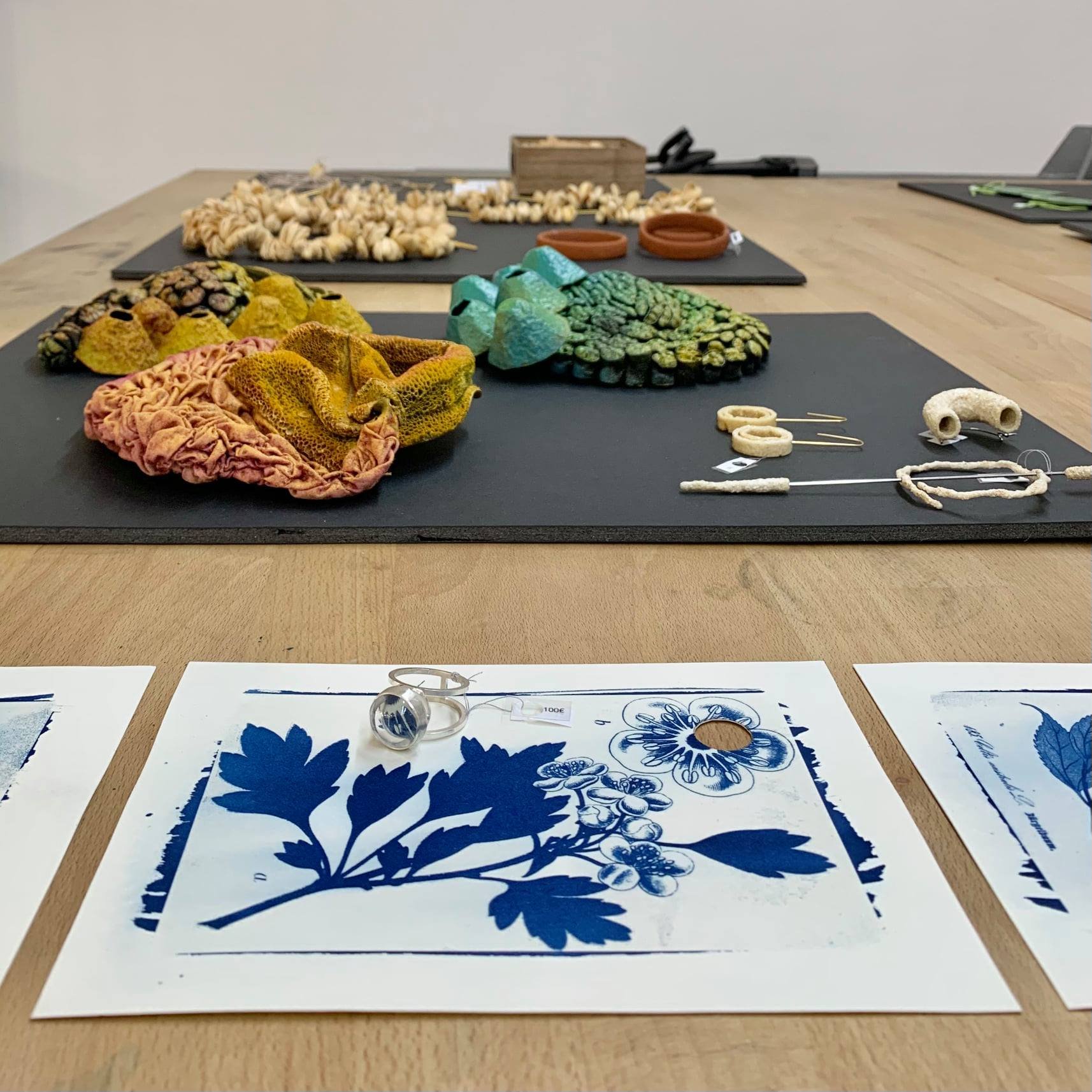

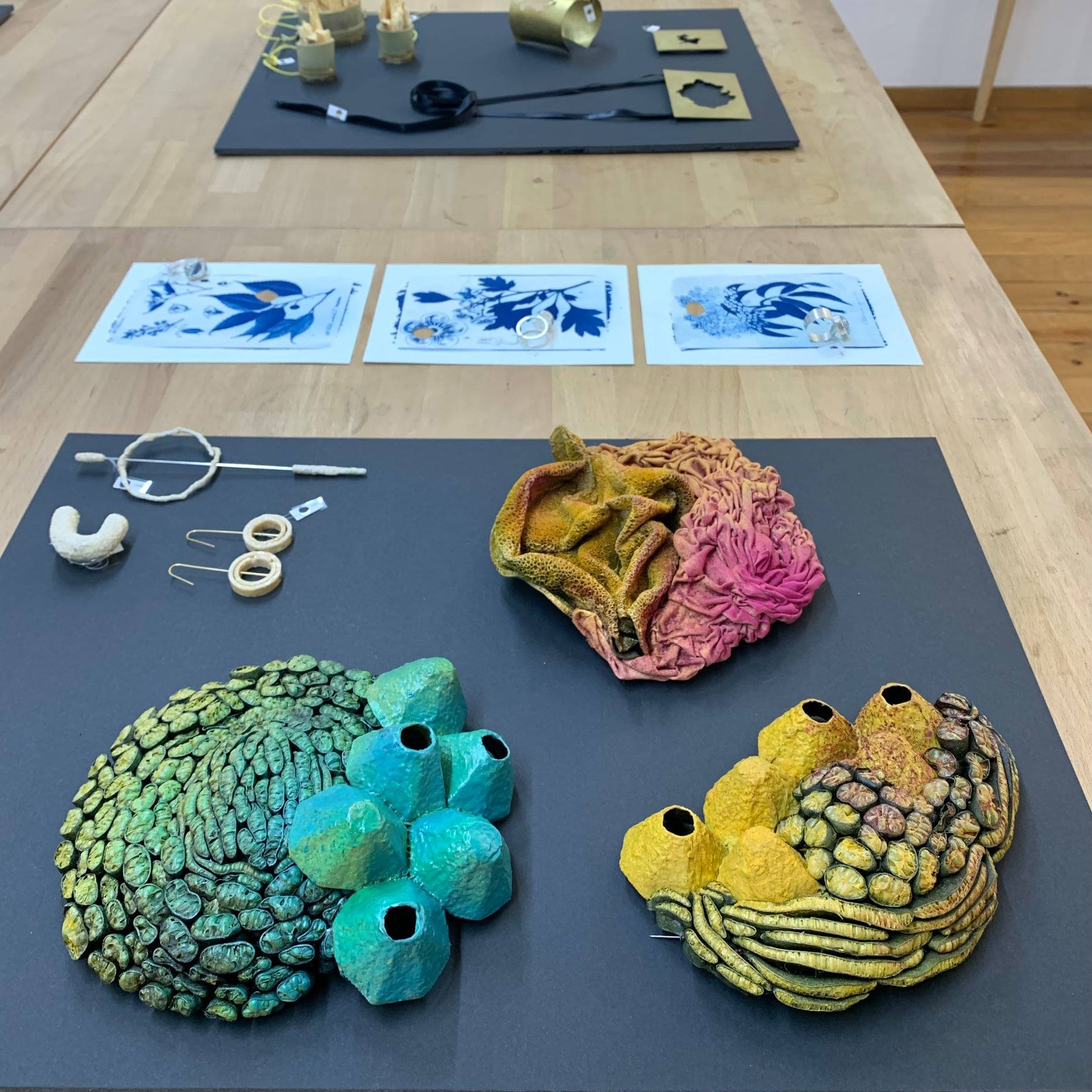
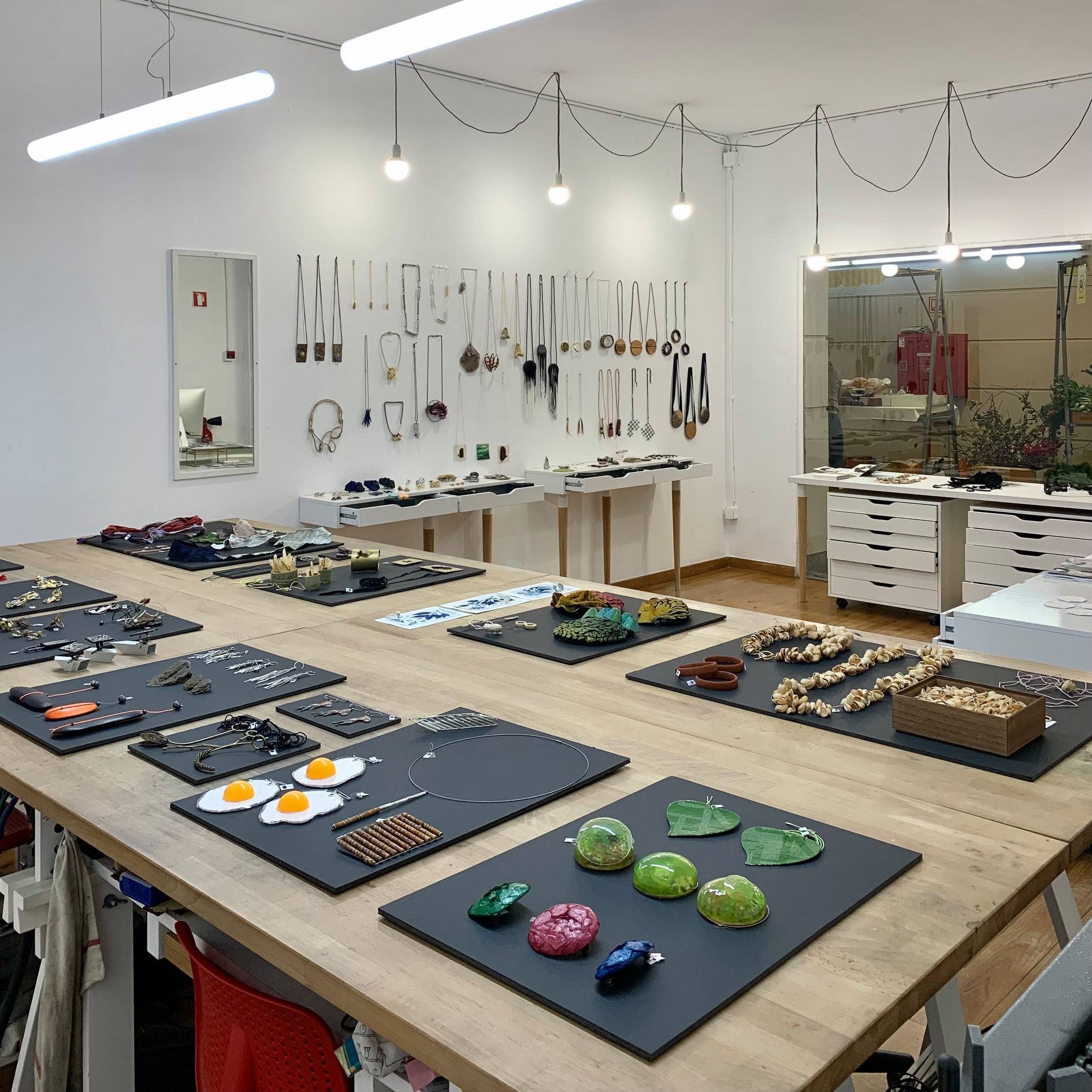
Installation photos courtesy of Tincal Lab.

